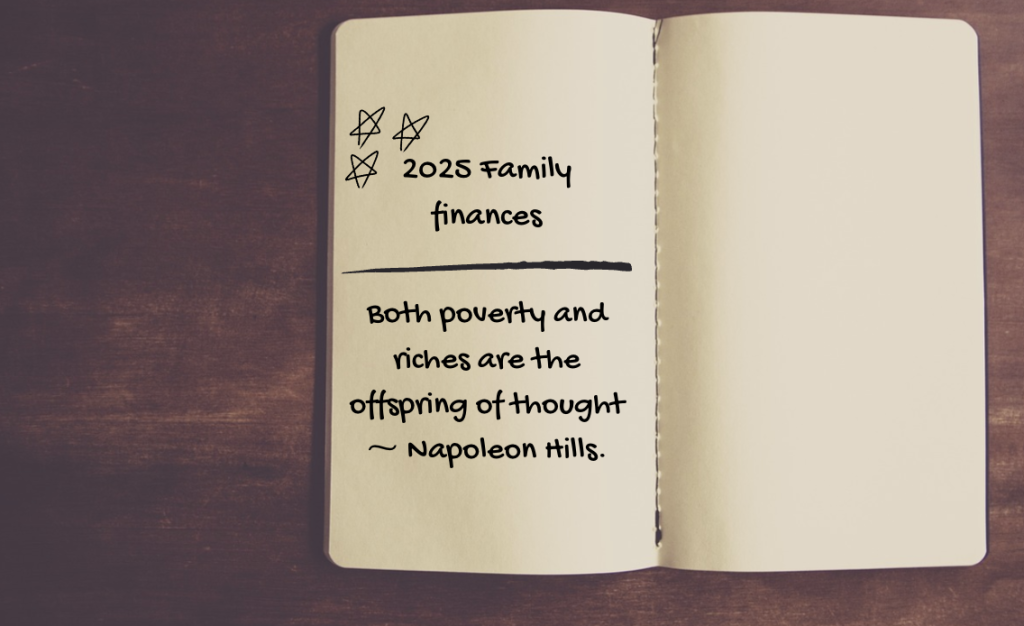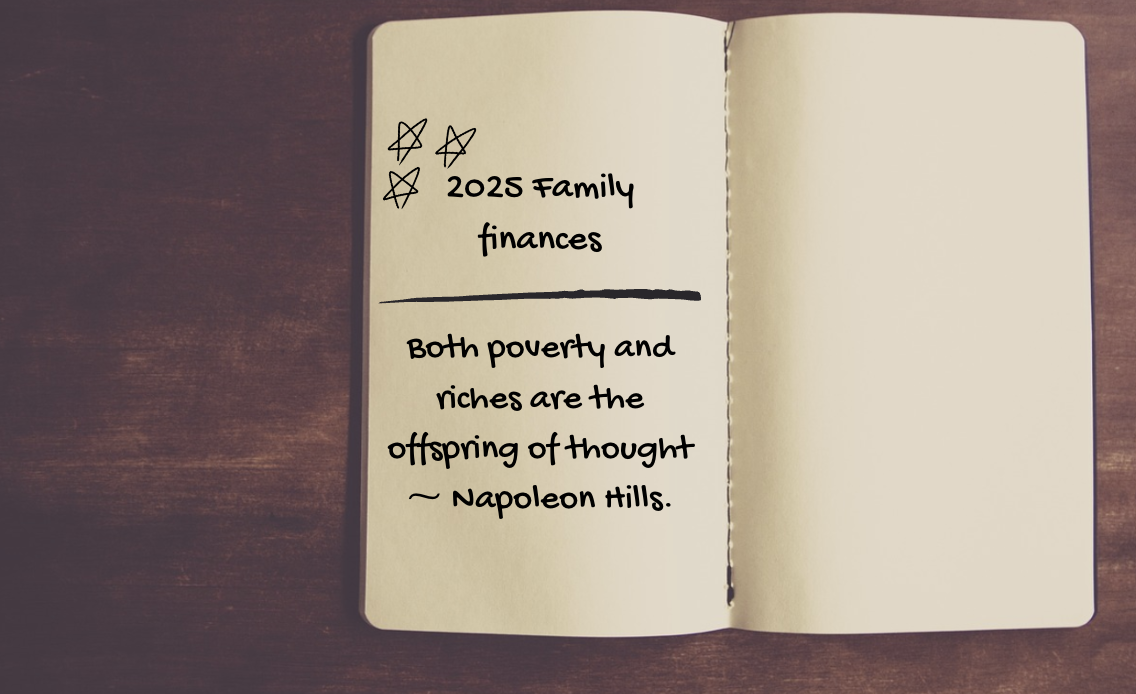New Year. New Habits. New Finances
Strategies to Build New, Lasting, and Growth-Oriented Family Finance Habits in the New Year
At the rate at which time is flying, 2025 will soon be here and as the new year approaches, many families take the opportunity to reflect on their financial habits and set goals for the upcoming year.
Building new, lasting, and growth-oriented financial habits is essential for achieving financial stability and fostering a culture of financial literacy within the family.
Here are some effective strategies to help your family establish and maintain healthy financial habits in the new year.
1. Review the Past Year’s Financial Habits
Before setting new goals, it’s important to take a moment to review the past year’s financial habits. Gather the family to:
- discuss what worked well and what didn’t in terms of budgeting, spending, and saving.
- analyze your expenses and income to identify patterns, successes, and areas for improvement.
- Were there unexpected expenses that could have been planned for?
- Did you meet your savings goals?
This reflective process not only helps you learn from past experiences but also sets a solid foundation for the new year.
By acknowledging both achievements and challenges, you can create more informed and realistic financial goals moving forward.
2. Set Clear Financial Goals Together
Building new financial habits involves:
- setting clear, achievable goals as a family
- discussing what financial objectives are important to each member. These goals could range from saving for a family vacation, paying off debt, or building an emergency fund.
By involving all family members in the goal-setting process, you create a sense of ownership and accountability.
Use the SMART criteria (Specific, Measurable, Achievable, Relevant, Time-bound) to outline your goals, making it easier to track progress throughout the year.

3. Implement Collaborative Budgeting
Collaborative budgeting is an effective way to engage all family members in the financial planning process. This can include:
- Creating a family budget that accounts for both needs and wants, and involve everyone in discussions about income, expenses, and savings goals.
- Utilizing budgeting tools or apps that allow for shared access, real-time updates and contributions from all family members.
- Regularly reviewing the budget together to assess progress and make adjustments as needed. This approach not only enhances financial literacy but also fosters teamwork and communication within the family.
4. Embrace Technology for Financial Management
Incorporate technology into your family discussions about finances. For example, show your children how to use budgeting apps, helping them develop their financial skills. By embracing technology, you can create a more informed and engaged family when it comes to managing finances.
You can also take the Moski Money Personality to allow you to know your children’s appraoch to money management
5. Practice Mindful Spending
Encourage your family to adopt thoughtful and concious spending habits. This involves being aware of where your money goes and making intentional choices about purchases. Implement strategies such as the 24-hour rule for non-essential purchases, where family members wait a day before buying something to evaluate its necessity.
Create a cash-only policy for discretionary spending categories, such as entertainment or dining out. Withdraw a set amount of cash each week or month, and once it’s gone, no more spending in that category until the next budget period. This practice not only helps control overspending but also teaches children the value of budgeting and financial responsibility.
6. Establish Regular Financial Check-Ins
Make it a habit to hold regular financial check-ins as a family. These meetings can be monthly or quarterly, depending on what works best for your family. Use this time to review your financial goals, assess your budget, and discuss any challenges or successes.
Encourage open dialogue during these check-ins, allowing each family member to share their thoughts and feelings about finances. This practice fosters transparency and trust, making it easier to navigate financial challenges together.
7. Encourage Saving and Investing
Teach your family the importance of saving and investing for the future. Start by setting up a family savings account where everyone can contribute towards common goals, such as a family vacation or a new home.
Introduce children to age-appropriate investment concepts, such as the benefits of compound interest and the importance of starting to save early. Consider opening custodial accounts or investment apps designed for kids, allowing them to learn about investing firsthand.
8. Celebrate Financial Milestones
Recognizing and celebrating financial milestones can motivate your family to stay committed to their financial goals. Whether it’s reaching a savings target, paying off debt, or successfully sticking to a budget for a month, take the time to acknowledge these achievements.
Plan a small family celebration or reward to mark these milestones. Celebrating successes reinforces positive financial habits and encourages everyone to continue working towards their goals.
Finally
Building new, lasting, and growth-oriented family finance habits requires commitment, collaboration, and communication.
As you embark on this journey together, remember that financial literacy is a lifelong skill that will benefit each family member for years to come.
Embrace the new year as an opportunity to foster a culture of financial responsibility and growth within your family.








